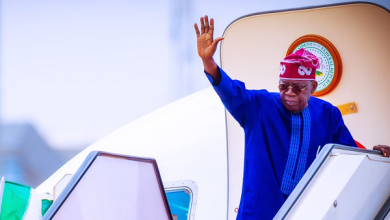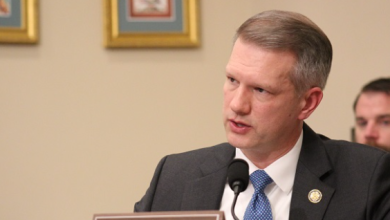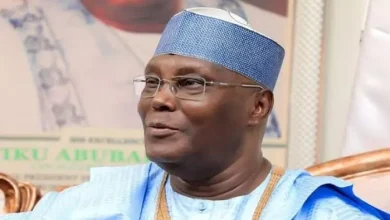Lead
Africa’s Financial Woes: $90bn lost to illicit flows, debt service burden

Despite a $74 billion Official Development Assistance (ODA) inflow into Africa, a report by the Mo Ibrahim Foundation (MIF), has said that this funding has been cancelled by the about $90 billion Illicit Financial Flows (IFFs) from the continent.
In its latest forum report titled, “Financing the Africa We Want,” it also stated that Africa’s domestic financial resources were being significantly undermined by huge debt servicing burden.
According to the report, while the continent’s potential gains from taxes, sovereign wealth funds, pension funds and remittances are substantial and largely untapped, the issue of illegal flows out of the continent remain a challenge.
“Africa’s external public debt nearly doubled from $349.4 billion in 2014 to $690 billion in 2023, amounting to 24 per cent of the continent’s Gross Domestic Product (GDP). Debt service consumes almost 14 per cent of government spending twice the allocation for health.
“Additionally, the continent loses approximately $90 billion annually to IFFs, surpassing the $74 billion received in ODA in 2023,” the new report added.
Besides, with a tax-to-GDP ratio of 16 per cent, it stated that Africa lags behind other regions, stressing that only 14 countries meet the 15 per cent threshold deemed necessary for sustainable development.
“Wealth taxes are virtually non-existent and corporate tax exemptions result in an estimated $55 billion in foregone revenue annually”, it stressed.
While highlighting that African sovereign wealth funds and pension funds hold significant potential, with assets estimated at $130 billion and $220 billion, respectively, it noted that remittances contribute over $90 billion annually, representing more than 10 per cent of GDP in several countries.
“African pension funds and sovereign wealth funds (SWFs) are conservatively valued at around $220 billion and $130 billion, respectively, while remittances generate an additional $90 billion in inflows annually.
“However, debt and illicit financial flows are drying up Africa’s domestic resources. With the continent’s external public debt stock making up almost a quarter of its GDP ($690 billion), debt service is costing countries billions and diverting funds away from key development priorities like health, education and adaptation to climate change.
“Additionally, IFFs and tax holidays are costing Africa almost $90 billion and around $55 billion a year, respectively. Though not the most indebted region at global level, Africa’s debt-to-GDP ratio is the highest in the world,” the report noted.
It admitted that debt is not necessarily an issue because most world regions require liquidity in the form of debt to achieve economic development goals, as evident in Asia, but explained however that when debt makes up almost a quarter of GDP, as in Africa, it diverts key funds away from public needs, especially in a time of exogenous crises.
“Debt service has risen to a total of $102.6 billion in 2024, or 13.6 per cent of government expenditure. That is almost twice what the continent spent on health (7.3 per cent in 2021) and almost as much as education expenditure (14.7 per cent in 2023),” it said.
It also highlighted recent massive ODA cuts from historical donor countries. “On the day of his second inauguration on 20 January 2025, US President Donald Trump froze US aid for 90 days, pending a government review.
“As of 7 May, only 891, or 14 per cent of the 6,256 operating USAID programmes remained, worth $69 billion (down from $120 billion on 20 January 2025). In 2023, the latest year available, the US contributed 20.7 per cent of total ODA to Africa.
“In Germany, Africa’s second largest bilateral donor after the US, budget reductions for ODA between 2023 and 2025 amount to €3 billion ($3.1 billion), or 10.5 per cent . France’s 2025 budget includes a €1.2 billion ($1.4 billion) cut to development aid, bringing it to 18.6 per cent less than 2024. The UK has also reduced development aid by about 6.5 per cent, from £15.3 billion in 2023 to £14.3 billion in 2025,” the MIF report said.
Commenting on the report, Founder of the Foundation, Mo Ibrahim, stated that ‘The Africa We Want’ is not a 50-year vision of a continent dependent on aid, but one of a global powerhouse charting its own path.
“The responsibility for delivering this vision belongs to us, not to any partner. The good news is we have the resources to make this a reality. First, domestic financial resources can be better leveraged.
“(There’s the need) to dry up illicit financial flows that continue to drain out of the continent more than ODA received, managing an external debt which now represents the unacceptable level of a quarter of the continent’s GDP, strengthening domestic tax systems, redirecting African sovereign and pension funds toward local and regional investments and making better use of remittances.
“Domestic natural resources must be efficiently monetised, in order to benefit and prioritise our continent’s people. Africa’s natural wealth is well documented; the continent is home to 30 per cent of the world’s mineral reserves and owns between 5-75 per cent of the global reserves of the minerals critical to building a green global economy.
“But to benefit from this potential we need to move up the value chain and beyond the extractive model. This starts by prioritising governance, with better and more transparent contracts and licensing agreements ensuring that Africa’s wealth of natural resources translates into wealth for its citizens, rather than driving up the profits of foreign companies,” he added.
Arise News



